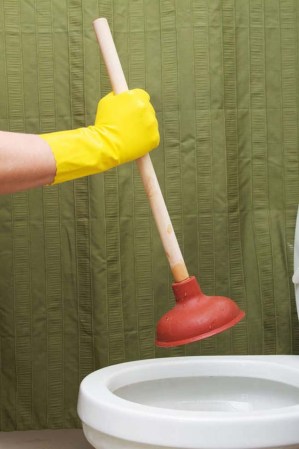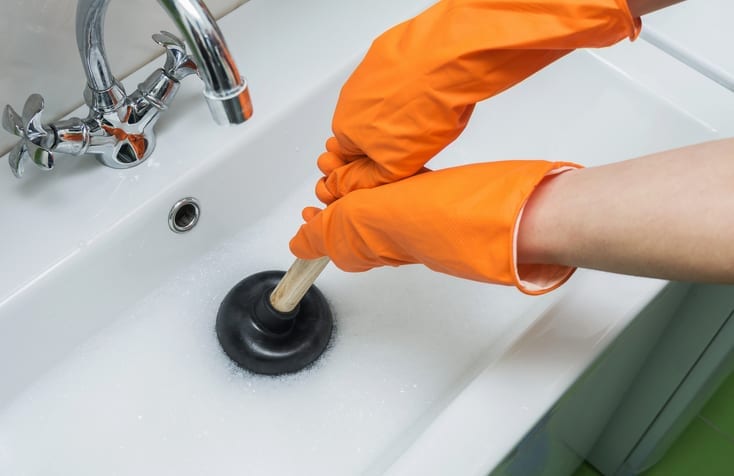What are your thoughts and feelings on How To Use Your Toilet Plunger Correctly in 5 Easy Steps?

Intro
Proper upkeep of house drains is essential for protecting against clogs and making sure smooth water flow. One of the trick devices in every house owner's toolkit is the bettor, along with numerous drainpipe cleaners developed to take on stubborn clogs successfully. This write-up discovers just how to make use of bettors and drainpipe cleansers properly to maintain your drains pipes streaming easily.
Section 1: Comprehending Plungers
Types of Plungers
There are several sorts of bettors offered, each developed for different sorts of drains and clogs. One of the most typical types consist of mug plungers, flange bettors, and accordion plungers.
How Plungers Job
Plungers work with the concept of creating stress and suction to displace blockages. When correctly applied over a drainpipe, they develop a vacuum that can pull out particles or separate blockages.
Picking the Right Bettor
Selecting the appropriate bettor depends on the type of drain and the nature of the blockage. Mug bettors are excellent for sinks and bathtubs, while flange plungers are much better matched for commodes because of their layout.
Typical Mistakes with Plungers
Avoiding these blunders makes sure reliable plunging: improper seal around the drain, insufficient force, and not clearing surrounding particles.
Area 2: Making Use Of Plungers Properly
Prep work
Prior to plunging, guarantee the plunger covers the drain entirely and creates a limited seal. Clear any type of visible particles around the drainpipe opening.
Technique
Beginning with mild plunging motions to construct suction. Boost pressure progressively, utilizing a steady rhythm. Repeat as essential up until the drainpipe removes.
Troubleshooting Tips
If diving doesn't work, try adjusting the seal, applying oil jelly for a far better seal, or utilizing a different type of bettor.
Section 3: Understanding Drain Cleaners
Sorts Of Drainpipe Cleaners
Drain pipes cleansers can be chemical or chemical. Chemical cleansers utilize strong chemicals to liquify clogs, while chemical cleansers utilize all-natural enzymes to break down organic matter.
Exactly How Drain Cleaning Company Work
Chemical cleaners respond with obstructions to dissolve them, while enzymatic cleansers break down natural materials like hair and grease without hurting pipelines.
Safety Considerations
Always wear gloves and eye security when making use of chemical drainpipe cleansers. Make certain ample air flow and comply with supplier directions carefully.
Eco-Friendly Alternatives
Think about using vinegar and baking soda or enzyme-based cleansers for environmentally friendly choices that are safer for pipelines and the environment.
Section 4: Utilizing Drainpipe Cleaners Effectively
Application Strategies
Pour chemical cleaners directly into the drain opening. Allow them to benefit the recommended time prior to purging with warm water. Chemical cleaners should sit over night.
Preventative measures
Stay clear of mixing various sorts of cleansers, as this can create harmful fumes. Never make use of chemical cleaners along with a plunger, as spilling can take place.
Handling Persistent Clogs
For consistent clogs, think about making use of a pipes serpent or calling a specialist plumbing technician to prevent damage to pipes.
Final thought
In conclusion, comprehending exactly how to make use of bettors and drain cleansers properly is important for keeping healthy and balanced pipes systems. By selecting the right devices and techniques, homeowners can deal with minor obstructions and avoid significant plumbing concerns down the line.
How to Use a Plunger to Unclog a Drain
The humble plunger is a simple yet effective tool for breaking clogs in sinks, tubs and toilets. This handy tool is easy to use. You can make the most of its power if you understand how it works. Ready to dive in? Here’s what you need to know.
Safety First!
Never use a plunger with drain chemicals. Water will splash as you work, and the chemicals can spatter, burning skin and eyes. It’s a good idea to use rubber gloves and wear safety goggles when you work on a clog.
Choose the Right Tool for the Job
Plungers come in two different styles. Sinks, bathtubs and showers require a cup plunger. Like its name suggests, the rubber end is shaped like a cup. Use a flange plunger on toilets. These plungers have a rubber funnel extending from the cup. A plunger needs to be big enough to cover the drain.
Ready, Set, Plunge!
Coat the rim: Coat the plunger rim with petroleum jelly. This helps make a better seal.
Block outlets: Hold a wet rag over nearby outlets such as the overflow vent or the drain in a second sink.
Release air: Insert the plunger at an angle into the water. Water will displace air in the cup. A water-filled cup is more forceful than one filled with air.
Keep the plunger upright: Hold the plunger perpendicular to the drain. Use fast, forceful strokes, but make the first stroke gentle. The first stroke can create a splash if the cup still contains air. Thrust the plunger 15 to 20 times.
Snap off the plunger: The final stroke should be a strong upward motion that ends when the plunger snaps off the drain.
Repeat the process: you may need to repeat this sequence several times. When the water drains away, your work is done. High-five! https://plumbernw.com/blog/how-to-use-a-plunger-to-unclog-a-drain/

Application Strategies
Pour chemical cleaners directly into the drain opening. Allow them to benefit the recommended time prior to purging with warm water. Chemical cleaners should sit over night.
Preventative measures
Stay clear of mixing various sorts of cleansers, as this can create harmful fumes. Never make use of chemical cleaners along with a plunger, as spilling can take place.
Handling Persistent Clogs
For consistent clogs, think about making use of a pipes serpent or calling a specialist plumbing technician to prevent damage to pipes.
Final thought
In conclusion, comprehending exactly how to make use of bettors and drain cleansers properly is important for keeping healthy and balanced pipes systems. By selecting the right devices and techniques, homeowners can deal with minor obstructions and avoid significant plumbing concerns down the line.
How to Use a Plunger to Unclog a Drain
The humble plunger is a simple yet effective tool for breaking clogs in sinks, tubs and toilets. This handy tool is easy to use. You can make the most of its power if you understand how it works. Ready to dive in? Here’s what you need to know.
Safety First!
Never use a plunger with drain chemicals. Water will splash as you work, and the chemicals can spatter, burning skin and eyes. It’s a good idea to use rubber gloves and wear safety goggles when you work on a clog.
Choose the Right Tool for the Job
Plungers come in two different styles. Sinks, bathtubs and showers require a cup plunger. Like its name suggests, the rubber end is shaped like a cup. Use a flange plunger on toilets. These plungers have a rubber funnel extending from the cup. A plunger needs to be big enough to cover the drain.
Ready, Set, Plunge!
Coat the rim: Coat the plunger rim with petroleum jelly. This helps make a better seal. Block outlets: Hold a wet rag over nearby outlets such as the overflow vent or the drain in a second sink. Release air: Insert the plunger at an angle into the water. Water will displace air in the cup. A water-filled cup is more forceful than one filled with air. Keep the plunger upright: Hold the plunger perpendicular to the drain. Use fast, forceful strokes, but make the first stroke gentle. The first stroke can create a splash if the cup still contains air. Thrust the plunger 15 to 20 times. Snap off the plunger: The final stroke should be a strong upward motion that ends when the plunger snaps off the drain. Repeat the process: you may need to repeat this sequence several times. When the water drains away, your work is done. High-five! https://plumbernw.com/blog/how-to-use-a-plunger-to-unclog-a-drain/

As a fervent person who reads about How To Use Your Toilet Plunger Correctly in 5 Easy Steps, I figured sharing that piece of content was valuable. Are you aware of another person who is looking into the topic? Why not share it. Many thanks for being here. Return soon.
Call Today